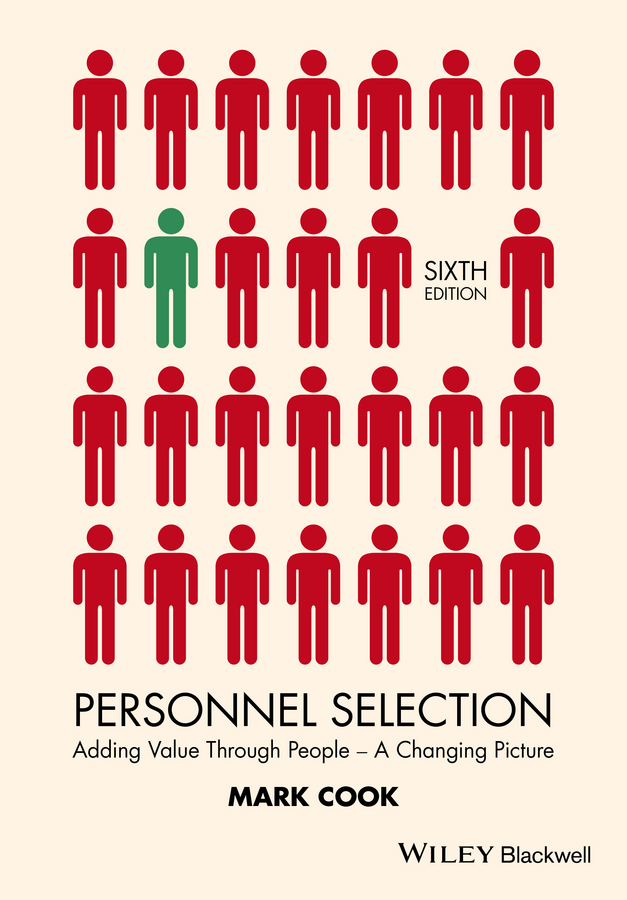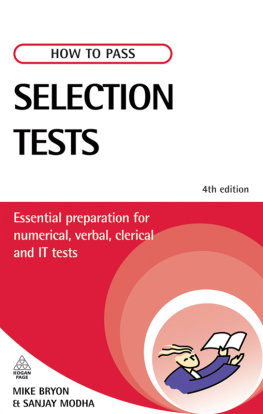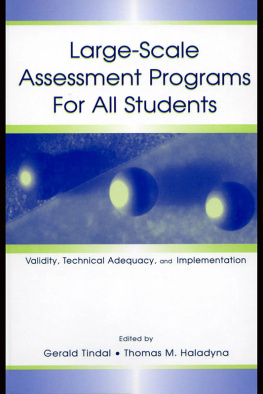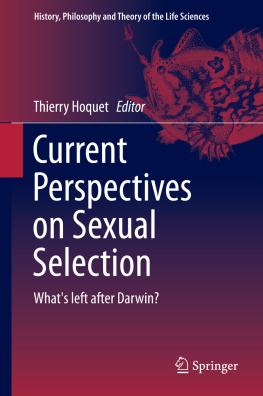
Table of Contents
List of Tables
- Chapter 01
- Chapter 02
- Chapter 03
- Chapter 04
- Chapter 05
- Chapter 06
- Chapter 07
- Chapter 08
- Chapter 09
- Chapter 10
- Chapter 11
- Chapter 12
- Chapter 13
- Chapter 14
- Chapter 15
List of Illustrations
- Chapter 01
- Chapter 02
- Chapter 04
- Chapter 05
- Chapter 06
- Chapter 07
- Chapter 08
- Chapter 09
- Chapter 10
- Chapter 11
- Chapter 12
- Chapter 13
- Chapter 14
Guide
Pages
Personnel Selection
Adding Value Through People A Changing Picture
SIXTH EDITION
Mark Cook
This edition first published 2016
2016 John Wiley & Sons, Ltd.
Edition history: John Wiley & Sons, Ltd. (1e, 1988; 2e, 1993; 3e, 1998; 4e, 2004; 5e, 2009)
Registered Office
John Wiley & Sons, Ltd, The Atrium, Southern Gate, Chichester, West Sussex, PO19 8SQ, UK
Editorial Offices
350 Main Street, Malden, MA 02148-5020, USA
9600 Garsington Road, Oxford, OX4 2DQ, UK
The Atrium, Southern Gate, Chichester, West Sussex, PO19 8SQ, UK
For details of our global editorial offices, for customer services, and for information about how to apply for permission to reuse the copyright material in this book please see our website at www.wiley.com/wiley-blackwell.
The right of Mark Cook to be identified as the author of this work has been asserted in accordance with the UK Copyright, Designs and Patents Act 1988.
All rights reserved. No part of this publication may be reproduced, stored in a retrieval system, or transmitted, in any form or by any means, electronic, mechanical, photocopying, recording or otherwise, except as permitted by the UK Copyright, Designs and Patents Act 1988, without the prior permission of the publisher.
Wiley also publishes its books in a variety of electronic formats. Some content that appears in print may not be available in electronic books.
Designations used by companies to distinguish their products are often claimed as trademarks. All brand names and product names used in this book are trade names, service marks, trademarks or registered trademarks of their respective owners. The publisher is not associated with any product or vendor mentioned in this book.
Limit of Liability/Disclaimer of Warranty: While the publisher and author have used their best efforts in preparing this book, they make no representations or warranties with respect to the accuracy or completeness of the contents of this book and specifically disclaim any implied warranties of merchantability or fitness for a particular purpose. It is sold on the understanding that the publisher is not engaged in rendering professional services and neither the publisher nor the author shall be liable for damages arising herefrom. If professional advice or other expert assistance is required, the services of a competent professional should be sought.
Library of Congress Cataloging-in-Publication Data
Names: Cook, Mark, 1942 author.
Title: Personnel selection : adding value through people a changing picture / Mark Cook.
Description: Sixth edition. | Chichester, West Sussex, UK : John Wiley & Sons, 2016. | Includes bibliographical references and index.
Identifiers: LCCN 2015039086 (print) | LCCN 2016000497 (ebook) | ISBN 9781118973592 (cloth) | ISBN 9781118973585 (pbk.) | ISBN 9781118973561 (ePub) | ISBN 9781118973578 (Adobe PDF)
Subjects: LCSH: Employee selection.
Classification: LCC HF5549.5.S38 C66 2016 (print) | LCC HF5549.5.S38 (ebook) | DDC 658.3/112dc23
LC record available at http://lccn.loc.gov/2015039086
A catalogue record for this book is available from the British Library.
Preface to the sixth edition
Every chapter of this sixth edition has been revised to incorporate new research and new ideas, so that amount of change in each chapter gives an indication of much new research has been reported in each area. The chapters on personality and assessment centres have needed the most revision. In order to keep the book within a manageable and affordable length a lot of older material has had to be removed, but I have tried to keep some historically important material. , on the letter of reference, which has never been researched adequately, despite being so widely used. Every chapter has been rewritten even where there is not all that much new research to describe.
Established truths, or beliefs, continue to be questioned. Issues formerly described as finally settled and not needing any further discussion have been reopened, notably differential validity (whether the correlation between test and work performance might be different for different sections of the population, most particularly for white and non-white Americans). Another closed issue that has been reopened is the importance, or unimportance, of specific abilities compared with general mental ability. There certainly seems to be a trend for things that were formerly described confidently as not a problem to be appearing perhaps to pose a problem after all.
There is growing awareness of how different selection tests correlate, which tends to cast doubt on approaches that emphasize the paramount importance of matching the test to the job. Emphasis on identifying separate aspects of work performance, notably organizational citizenship, counterproductive work behaviour and adaptability, runs in parallel with the suggestion that there might be a tendency for all measures of work performance to be positively correlated, the monolithic hypothesis.
To keep the list of references to a reasonable length, references are not necessarily given for points that are not central to selection, e.g. heritability, or personality theory.
The key references sections at the end of each chapter are selected to be accessible, meaning they are written in English, and so far as possible obtainable through PsychInfo or other online systems. This tends to mean journal articles are included, whereas chapters in books are not.
Certain types of material I have generally not included, including simulations of work using students, and Monte Carlo simulations in which sets of data are generated according to certain rules, then analysed as if they were real data. I have always thought these an example of getting out what you put in, and not very useful.
One area that might be moving towards becoming important, but also controversial, could be the roles of commercial interests in general, and test publishers in particular. To declare my interests in this area, I have been involved in the publication of psychological tests in the past, but am not now.
I would to thank Swansea University for all their help with library and other facilities, and Karen Howard for her invaluable continuing support.
Department of Psychology
Swansea University
2015
Preface to the first edition
When I first proposed writing this book, I thought it self-evident that personnel selection and productivity are closely linked. Surely an organization that employs poor staff will produce less, or achieve less, than one that finds, keeps and promotes the right people. So it was surprising when several people, including one anonymous reviewer of the original book proposal, challenged my assumption, and argued that there was no demonstrated link between selection and productivity.
Next page







